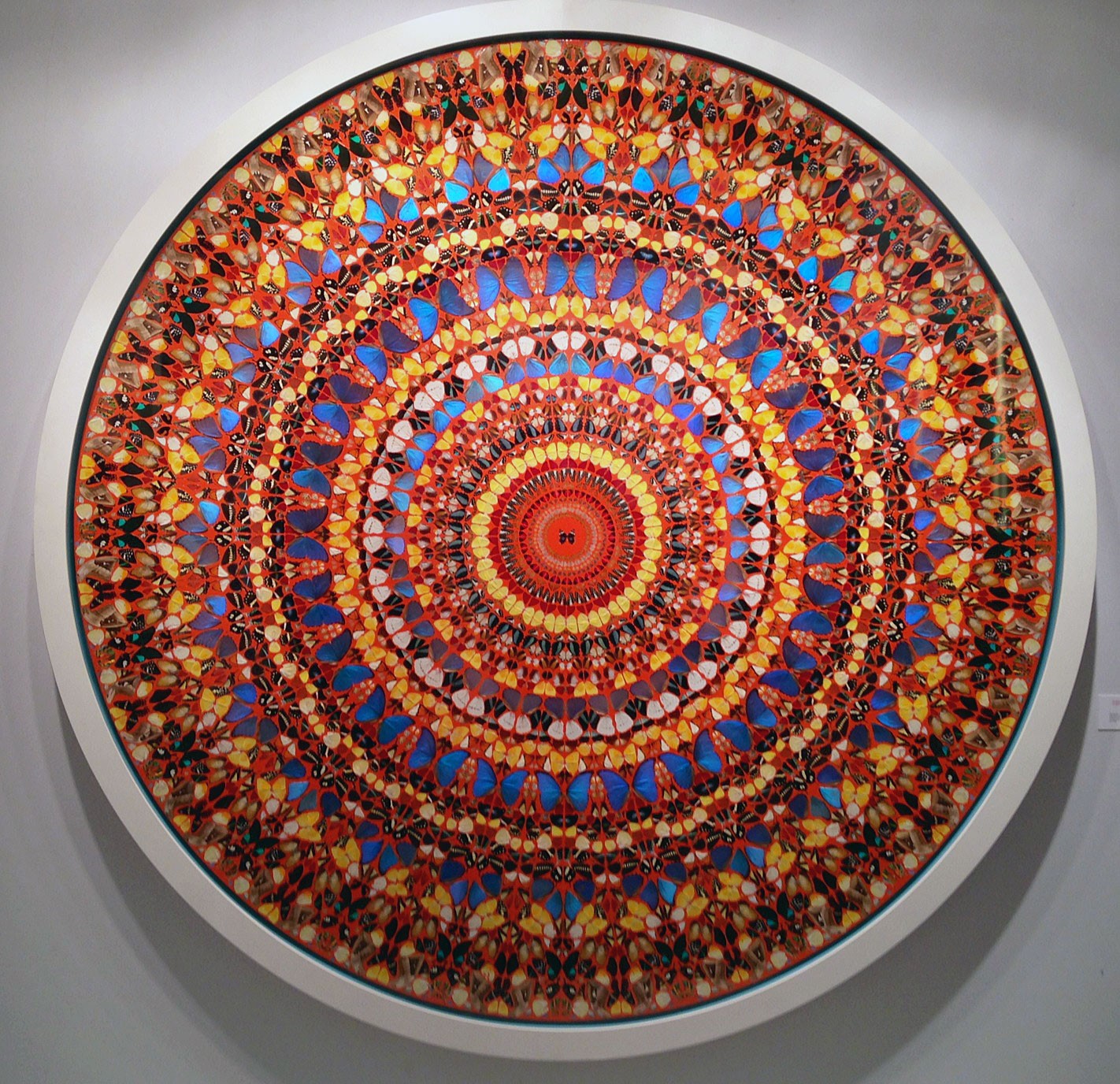When it came to creating my own Kaleidoscope, Damien Hirst was influential throughout as a reference for my design process. I thought this to be some of my favourite works asa designer.
“I’ve got an obsession with death … But I think it’s like a
celebration of life rather than something morbid.”
celebration of life rather than something morbid.”
The first ‘Kaleidoscope’ was created in 2001. Originally inspired by a Victorian tea tray found by Hirst, the works are made by placing thousands of different coloured butterfly wings in intricate geometric patterns into household paint.
The ‘Kaleidoscope’ paintings reference the spiritual symbolism of the butterfly, used by the Greeks to depict Psyche, the soul, and in Christian imagery to signify the resurrection. The works are reminiscent of, and even sometimes directly copy stained glass windows. Their titles similarly often reference Christian iconography, and Hirst chose to name a collection of paintings in 2008 after entries in The Book of Psalms.
Whilst the butterfly is one of Hirst’s most enduring “universal triggers”, in the ‘Kaleidoscope’ paintings he differs from his use of it in earlier works. Previously, the inclusion of live butterflies, was partially an exploration of “the way the real butterfly can destroy the ideal (birthday-card) kind of love; the symbol exists apart from the real thing.” Recalling someone once saying to him: “Butterflies are beautiful, but it’s a shame they have disgusting hairy bodies in the middle,” Hirst chose to use only the iridescent wings in the ‘Kaleidoscope’ paintings, divorcing the butterflies from “the real thing”. Titles such as ‘The Most Beautiful Thing in The World’ (2003) reflect the idealised beauty they encapsulate.





No comments:
Post a Comment